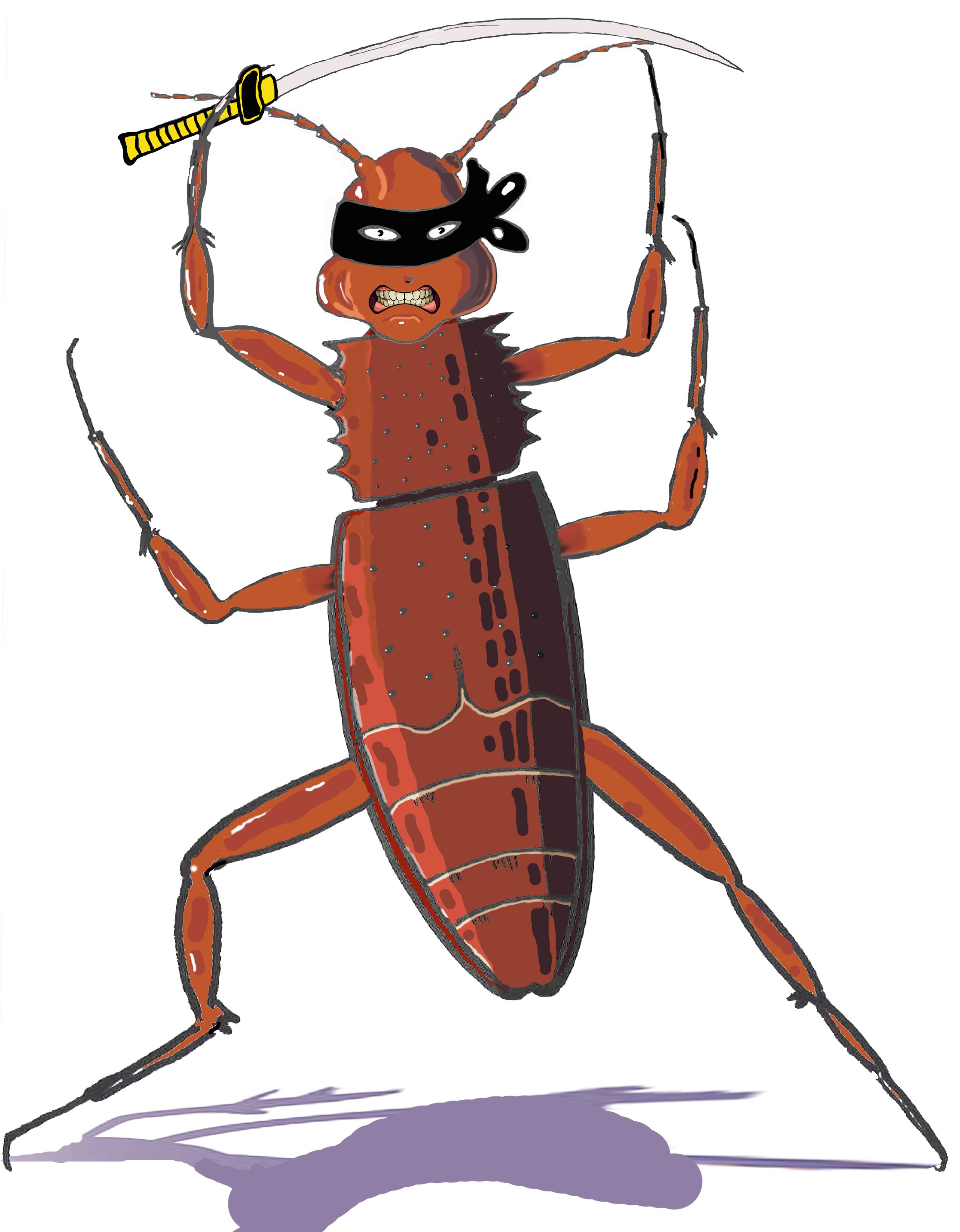Saw-toothed Grain Beetle - The Ninja of Stored Product Pests
Saw-toothed grain beetles can have "ninjalike" skills too enter food packaging Image copyright Insects Limited
In the quiet corners of our warehouses, homes and pantries, a stealthy insect with ninja-like qualities lurks – the saw-toothed grain beetle (Oryzaephilus surinamensis).
Minuscule in size, this pesky pest can slip undetected into the tightest of food containers and climb right up on the smoothest glass surfaces on its way to cause considerable damage to our food supplies and provoke frustration among homeowners and food processors alike.
We can almost imagine it doing cartwheels and leaping across tall buildings on its trek to get inside our food packages.
Let’s look into the fascinating world of saw-toothed grain beetles, exploring their characteristics, habits, and how to combat their unwelcome presence.
1. A Tiny Intruder: Identifying the Saw-Toothed Grain Beetle
Measuring between 2.5 to 3 mm in length, this reddish-brown beetle derives its name from the six saw-like projections along each side of its thorax.
These distinctive serrations make it easy to differentiate from other pantry pests like the flour beetle.
A saw-toothed grain beetle on a US Penny. Image: Patrick Kelley, Insects Limited.
Having a profile of less than half a millimeter, this stealthy insect can slip right through many types seals or small perforations of food packaging on its way to decimate the food product within.
The distinct saw-like protrusions on the thorax of the adult saw-toothed grain beetle makes it easy to distinguish from other stored product beetles except the look-alike merchant grain beetle. Photo credit: Samantha Kiever, Insects Limited
2. The Silent Invader: Life Cycle and Reproduction
Understanding the life cycle of these tiny invaders is crucial in effectively combating them.
The saw-toothed grain beetle silently undergoes a complete metamorphosis, consisting of four stages: egg, larva, pupa, and adult. Under optimal conditions
Having a profile of less than half a millimeter, this stealthy insect can slip right through many types of food packaging to decimate the food product within. Photo credit: Patrick Kelley, Insects Limited
Females can lay up to 300 eggs, depositing them within cracks and crevices near food sources. The eggs hatch into tiny white larvae that actively feed on the foodstuff, leaving behind a telltale sign of infestation – a fine powder-like frass.
3. Sneaky Behavior: Infestation Signs and Damage
The presence of saw-toothed grain beetles is often detected through the holes they chew into food packages and the powdery residue they leave behind. Their thin profile allows them to slip right around the cardboard flaps in boxes of pasta and rice. Since they are excellent climbers, they can easily migrate between packages, spreading infestations rapidly. Infested food can be rendered inedible and contaminated with beetle parts and excrement. Additionally, their presence in food processing facilities can lead to financial losses and damage the reputation of businesses.
4. Pantry Pirates: Preferred Habitats
Saw-toothed grain beetles are highly adaptable and can be found in various food products stored in pantries, kitchens, and food processing facilities. They are particularly attracted to grains, cereals, flour, pasta, rice, dried fruits, nuts, pet food, and other dry foodstuffs. They have been known to use the cracks in concrete floors of food warehouses to travel from one pallet of food to another. They thrive in tight spaces and in warm temperatures.
5. Preventive Measures: Keeping Saw-Toothed Grain Beetles at Bay
Preventing an infestation is always preferable to combating one. Here are some practical tips to minimize the risk of saw-toothed grain beetle invasions:
Inspect and clean food storage areas regularly.
Store food in airtight containers made of glass, metal, or heavy-duty plastic.
Rotate food supplies to ensure older items are used first.
Dispose of infested items promptly and seal them in plastic bags before discarding.
Keep a vigilant eye on new food products brought into your home.
6. Eradicating Infestations: Integrated Pest Management
If an infestation is already underway, Integrated Pest Management (IPM) practices can help control the population while minimizing environmental impact. IPM for saw-toothed grain beetles begins with a good monitoring program. Their ability to maneuver and climb also means that most sticky glue traps and pitfall traps do not work to trap them. Extensive research done at Insects Limited’s R&D Laboratory has found that the All Beetle Trap with Gel Attractant is the best trapping method available to monitor this elusive pest. IPM may involve physical control, such as removing infested products, and freezing or heating infested items to kill beetles and larvae. In severe cases, chemical treatments, such as diatomaceous earth or pyrethrin-based insecticides, could be used.
Pheromone Traps for Saw-Toothed Grain Beetle
Conclusion to Saw-toothed Grain Beetle
As invisible invaders, saw-toothed grain beetles pose a significant threat to our food supplies and storage areas. Their ninja-like abilities to sneak into, maneuver around, and infiltrate our food products can be infuriating and expensive. By understanding their biology and behavior and implementing preventive measures, we can better protect our homes and businesses from these tiny but formidable pantry pests. Stay vigilant, monitor, and act promptly, for even the smallest beetle can cause the biggest of problems.
Related Insect and Pheromone Posts
Read more about insects and pheromones in these related posts:
Product of the Month - All Beetle Trap Kit with RTU Gel Cartridge
Insect of the Month: Saw-toothed Grain Beetle (Oryzaephilus surinamensis)
Watch: Carpet Beetles and Other Dermestids - How, why, and what to do about them
Insects Limited, an Insect Pheromone Company
Insects Limited, Inc. researches, tests, develops, manufactures and distributes pheromones and trapping systems for insects in a global marketplace. The highly qualified staff also can assist with consultation, areas of expert witness, training presentations and grant writing.
Insects Limited, Inc. specializes in a unique niche of pest control that provides mainstream products and services to protect stored food, grain, museum collections, tobacco, timber and fiber worldwide. Please take some time to view these products and services in our web store.










